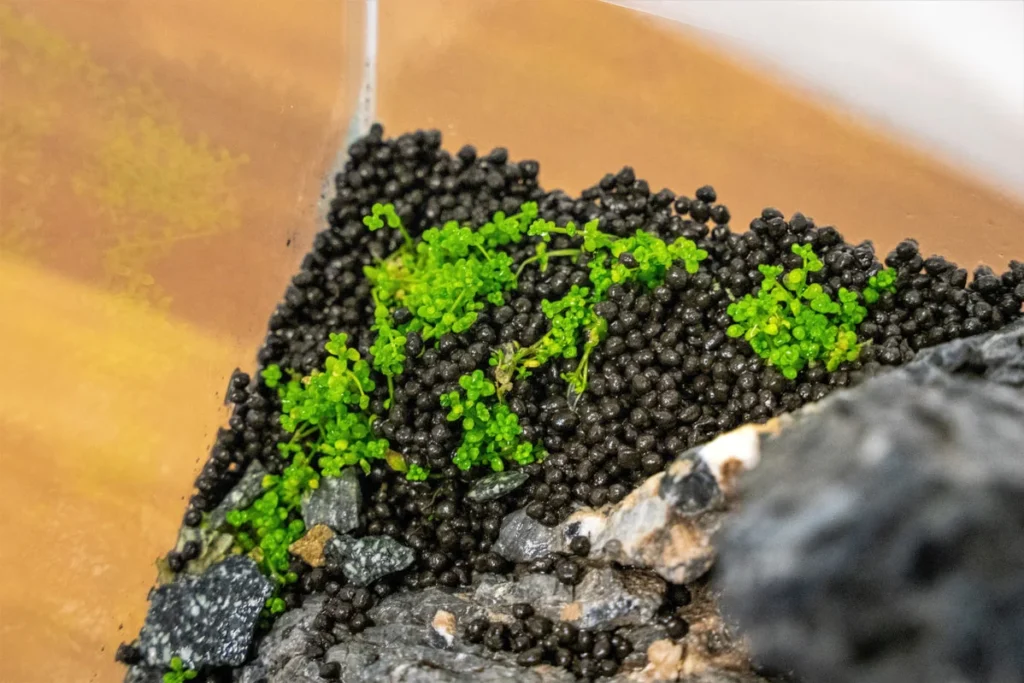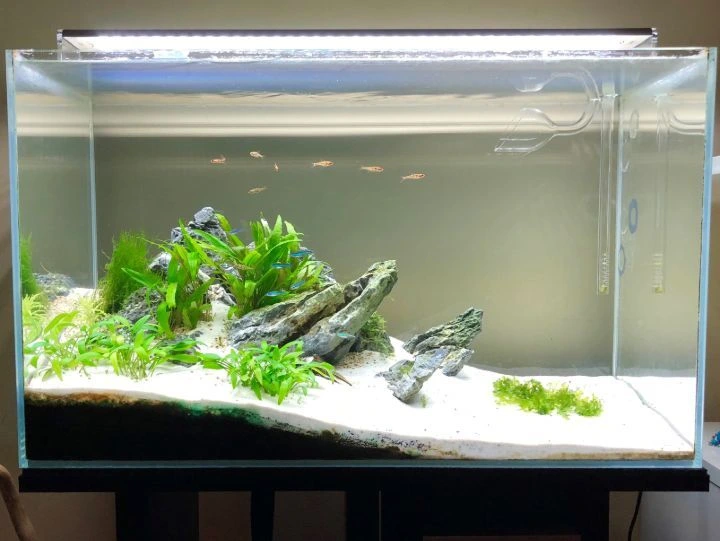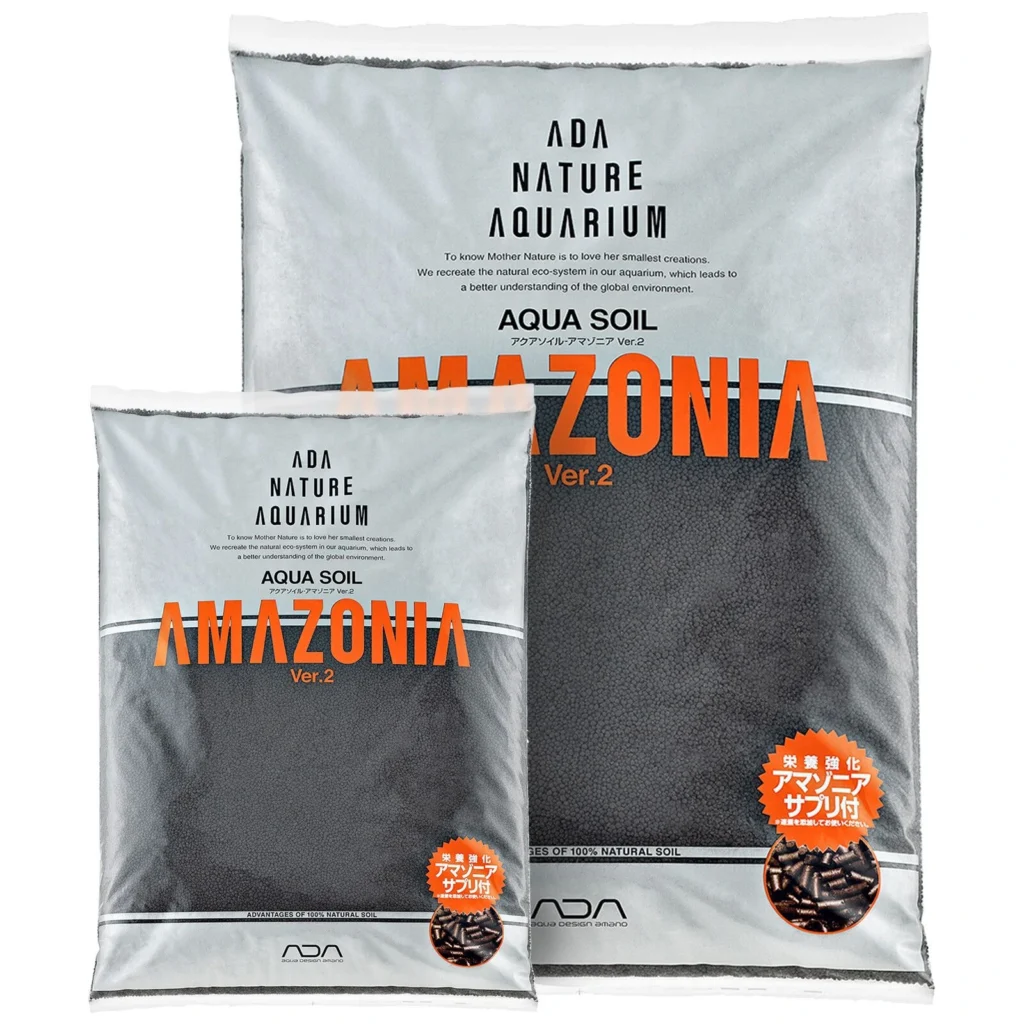Aquascaping is the art of creating a visually appealing underwater landscape in an aquarium. It involves careful selection of aquatic plants, hardscape materials, and the right substrate. The substrate plays a crucial role in providing a stable foundation for plants to grow and thrive. In this article, we will discuss some of the best substrates for aquascaping so that you can choose the right option for your next aquarium.
Aquasoil

Aquasoil is a popular choice among aquascapers due to its nutrient-rich composition. It is made from volcanic soil and contains essential plant nutrients like nitrogen, phosphorous, and potassium. Aquasoil not only provides a stable base for plants but also promotes healthy root growth. It also helps in maintaining a stable pH level in the aquarium.
The large drawback for aquasoil when compared against other substrate options would be the cost. It can get pretty pricy when used in larger aquariums, especially when compared against sand or gravel.
Sand

Sand is another commonly used substrate in aquascaping. It is easy to work with and provides a natural look to the aquarium. Sand comes in various grain sizes, ranging from fine to coarse. Fine-grained sand is preferred for plants with delicate roots, while coarse sand is suitable for plants with stronger root systems. It is important to choose a sand substrate that is specifically designed for aquarium use to avoid any harmful effects on the water chemistry.
It is becoming more popular for aquascapers to use sand as a top substrate layer, with aquasoil or another substrate as the base layer. This type of setup gives a naturalistic feel and can be beneficial for plant growth, with nutrients in the base layer and an easy-to-clean top layer of sand.
Gravel

Gravel is a versatile substrate that is widely used in both freshwater and saltwater aquariums. It comes in different sizes and colors, allowing for creative designs. Gravel provides good water circulation and prevents the accumulation of debris. It also provides a stable base for plants and allows for the growth of beneficial bacteria.
When using gravel, it’s recommended to use root tabs or liquid fertilizers to supplement nutrients for healthy plant growth. Additionally, make sure to choose a size of gravel that is suitable and safe for the fish species you plan on keeping in the tank.
Flourite

Fluorite is a porous clay gravel that is rich in essential nutrients. It is known for its ability to absorb and release nutrients slowly, providing a steady supply to the plants. Fluorite is available in different colors, adding visual interest to the aquascape. It is important to rinse fluorite thoroughly before adding it to the aquarium to remove any residual dust.
Aquascapers should note that while Fluorite releases nutrients gradually, periodic supplementation with liquid fertilizers or root tabs may be necessary to support the demands of nutrient-hungry plants. Experimenting with the various colors of Fluorite allows hobbyists to tailor the substrate to their desired aesthetic.
ADA Amazonia

ADA Amazonia is a specialized substrate developed by Aqua Design Amano (ADA), a renowned aquascaping brand from Japan. It is made from natural materials and contains a high concentration of nutrients. ADA Amazonia promotes healthy plant growth and enhances the overall appearance of the aquarium. It is recommended for advanced aquascapers who are looking for professional-grade substrates. It is particularly expensive when compared to other aqua substrates.
Mineralized Soil
Mineralized soil is a DIY substrate option that involves treating regular garden soil to remove impurities and enrich it with essential nutrients. This process helps to create a nutrient-rich substrate that supports plant growth. However, it requires careful preparation and monitoring of water parameters to avoid any adverse effects on the aquarium ecosystem.
Selecting your Aquascaping Substrate
When selecting a substrate for aquascaping, it is important to consider the specific needs of the plants and the overall design concept. It is recommended to research the requirements of the plants you intend to include in your aquascape and choose a substrate that meets those needs. Additionally, regular maintenance and monitoring of water parameters are essential to ensure the health and vitality of the aquarium.
As a result, the choice of substrate plays a vital role in the success of an aquascape. Aquasoil, sand, gravel, fluorite, ADA Amazonia, and mineralized soil are some of the best substrates available for aquascaping. Each substrate has its own unique properties and benefits, so it is important to choose one that suits your specific requirements. With the right substrate and proper care, you can create a stunning underwater landscape that will be the envy of every aquarist.

